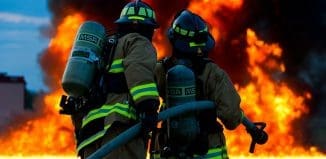Learning from the Carmel Fire: Israel’s Fire Fighters
This post is also available in:  עברית (Hebrew)
עברית (Hebrew)

A professional review of the process of lesson-learning and renewal in the northern district of the national Fire Fighting and Rescue Authority reveals how an organization – in shock after the Carmel disaster – acted right and turned into a highly effective and professional organization, ready to fulfill its duties.
Dr. Yossi Bolless, a Tel Aviv University professor and an expert on organizations during emergencies, followed the fire fighting authority for many months and explained the process in the IPRED emergency response conference.
For 25 years, said Dr. Bolless, the northern Israeli fire fighting array was failing. Boards of inquiry wrote their reports, which were ignored. State Comptrollers pointed out the lack of proper weather-related alerts or means of fire detection. There was no cooperation between fire fighters and the police, the IDF and local authorities. There were no proper communication systems. The result: In 2010 the fire fighting authority wasn’t ready to fulfill its duties, there were no proper training systems and the equipment was outdated.
Dr. Bolless: “The Carmel Fires, which caused 44 deaths and led to the evacuation of 17,000 residents of the north, were the beginning of a process of renewal. Things have changed drastically since then, and we’re following the positive developments with appreciation.”
The three stages of the renewal were mapping, planning and implementation.
IHLS – Israel Homeland Security
“In the past the relationship between fire fighting units and local authorities were strained. No more. Areas of activity were re-allocated, with jurisdictions similar to those of local police. A future strategy was formed, including detailed training programs and annual drills. The cooperation between fire fighters, military, police and rescue units was enhanced. The government invest half a billion shekels into the process. 89 new vehicles were added to the fire fighting fleet, with vehicles more than 20 years old taken out of order. The authority received 750 radios, and it now has a small fleet of eight fire fighting airplanes. The Nitsan communication system was installed, an advanced system that keeps the authority in constant contact with police forces.
471 new fire fighters were recruited, many of them IDF veterans. 200 volunteers were added. Relations with the health system were improved. The Dangerous Materials United was transferred from the Environmental Protection Ministry to the National Fire Fighting and Rescue Authority. Many drills were conducted, including professional lectures and workshops.”
The conclusion: “It’s shouldn’t take a disaster such as the Carmel fire to cause change. But when the government allocates the funds, and the organization itself – the National Fire Fighting Authority – takes a holistic approach and has good leadership, the results are good as well. The organization, which was in complete shock a year and a half ago, became efficient, professional and ready to fulfill its duties.”






























